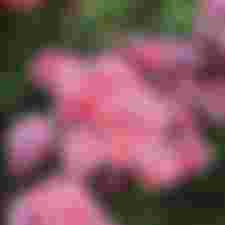She is considered the queen of flowers, she is a symbol of love and beauty, she is beautiful and simple - she is a ROSE. Few plants throughout history have caused more sighs than the official queen of all flowers. It is woven into the history and art of many peoples of the old world, carrying numerous faces of symbolism. Already at the very beginning of the study, "rose" is just a collective name for numerous species, subspecies, varieties created by selection. Roses are also the collective name for the genus Rosa, which includes the common pomegranate, or pomegranate rose (Rosa canina L.). During many centuries of cultivation, people have strived to get a variety of interesting colors, from snow white to intense red.
However, roses do not exist in this world just to beautify our garden. Roses have been known and recognized in medicine and cosmetics since ancient times, and rose petals, rose water, and oil are common ingredients in the cuisines of Eastern Europe, the Middle East, and North Africa.

Rose petals are used to make rose water and syrup, to improve the aroma of honey and various alcoholic beverages, it can be added to jellies, butter, to make vinegar, cakes, ice cream, and other sweets. When buying ready-made rose water for use in meals, make sure that the declaration says that it can be used in the food and not exclusively in cosmetics.
In addition to shopping, you can make rose water yourself in your kitchen. Rosewater is usually made from distilled water to which a little rose essential oil is added, but it can also be made by immersing rose petals in boiling water for about 15 minutes. First of all, be sure that there are no insects on the flowers, and never use flowers that have been previously sprayed with pesticides or fungicides. Also, use flowers at the peak of flowering because then it has the best taste. The buds are not used because they have not opened, while the withered petals usually have a bitter taste.

When using roses to prepare meals, it is very important to smell and try each type of rose, because some can be mild in taste and some bitter or sour. Most often, roses with a strong scent also have a strong taste.
To prepare roses for culinary use, rinse and shake them to drain excess water from them. Turn the flower upside down, holding the open flower in one hand, so that the stem is facing up. Use sharp scissors and cut just above the tree, and the petals will fall freely. Some have a bitter white part only at the bottom of the petal, so you can remove that part at once until the petals fall off. The abundance of scents and flavors of roses provides a lot of possibilities for use in the kitchen.
If you use fresh instead of dried petals or vice versa, keep in mind that dried petals have a stronger concentration of essential oils and therefore give a stronger taste than fresh, so if the recipe requires 1 cup of fresh rose petals, and you have dry, half the amount is enough to dry and vice versa, 1 cup of dry can be replaced with 2 cups of fresh rose petals.

Rosewater syrup

This syrup is an unavoidable ingredient in most Middle Eastern cuisines. Every chef has their own way of preparing it, so there are many variations of this classic recipe. Basically, the syrup is made from sugar and water to which rose water is added. Citrus juice can be added, someone adds cinnamon, which in the end gives the syrup a completely new dimension.
Ingredients for 3 cups:
• 1 cup of water
• 3 cups sugar
• 2 tablespoons lime juice
• ½ cups of rose water

Preparation: Mix water and sugar in a pan and cook over medium heat until it boils. Then lower the temperature and cook for another 5 minutes. Add lime juice, rose water, stir, and let it cook for another 10 minutes. If you want a thicker syrup, cook a little more so that more liquid evaporates. Stir occasionally. Remove the pan from the heat and allow to cool to room temperature. Strain and pour into a clean jar or bottle, close, and label. Be sure to refrigerate.

Ratluk of roses
Ratluk or Rahat lokum is a type of dessert with a pihtija consistency and sweet taste with the addition of powdered sugar. It is a favorite delicacy in Arab countries, Turkey, and the Balkans. The first ratluk was a ratluk with a rose aroma, obtained by adding rose petal extract or syrup.
Ingredients: baking oil, 25 g of powdered gelatin, 255 ml of water, 4 teaspoons of rose water, 450 g of crystal sugar, 3-4 drops of red food coloring, 3 tablespoons of powdered sugar, 1 teaspoon of density.

Preparation: Thinly oil a tray measuring 20 × 25 cm. Mix gelatin, water, and rose water in a large pan and add sugar. Gradually heat and stir constantly until the sugar and gelatin are melted. Increase the heat and wait for it to boil, without stirring. Reduce heat and cook for another 20-25 minutes. Remove from the heat and stir in the food coloring, then wait for it to cool for a few minutes. Pour the mixture into an oiled pan and set aside to cool for 24 hours. Cut into the desired shapes, and then roll each in a mixture of powdered sugar and density. Store in a vacuum container, between layers of greaseproof paper. Ratluk should not be stored in the refrigerator but at room temperature.
Fragrant sugar

Rose-scented sugar, of course, is easily made in the same way that vanilla sugar is prepared. By adding rose petals instead of vanilla pods in a jar with sugar, you get a fragrant addition for baking cakes.
Recipe for 500 g of fragrant sugar
In a clean, narrow jar of 500 ml, pour sugar to 1/3 of the height, add a handful of rose petals, then add sugar again to 2/3 of the height of the jar, again add rose petals and sugar to a height of 1 cm from the top of the jar. Close the jar tightly and leave it in a cool and dark place. After 2-3 weeks, the sugar is ready for use.

Roses and health
Rose essential oil has antibacterial, antifungal, antiseptic, and antiviral properties. The fragrance can be used in many ways, in aromatherapy, as a remedy for depression, insomnia, stress, and even as an aphrodisiac. In cosmetics, the scent of roses is a common ingredient in lotions, perfumes, body and hair care products, oils, and bath salts.

The author
@Andjela99








